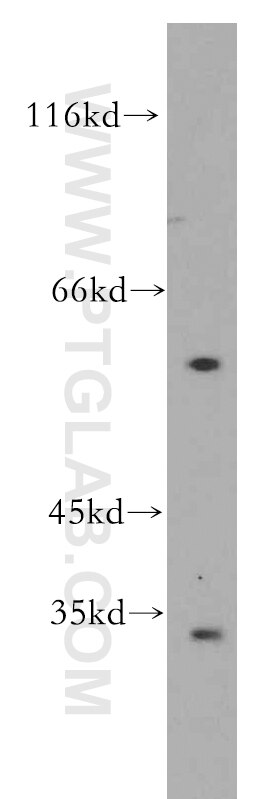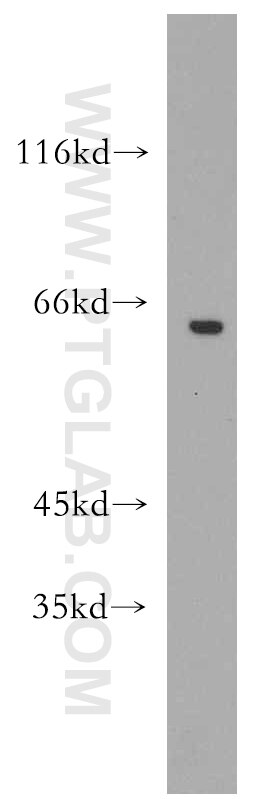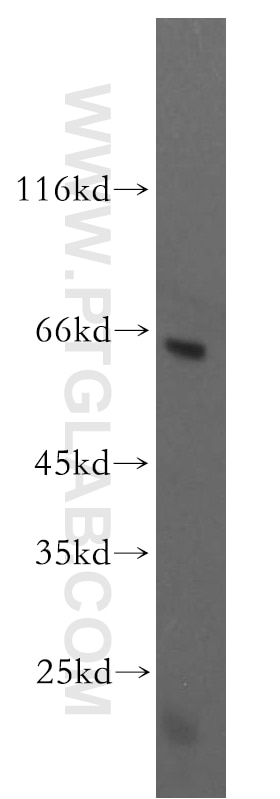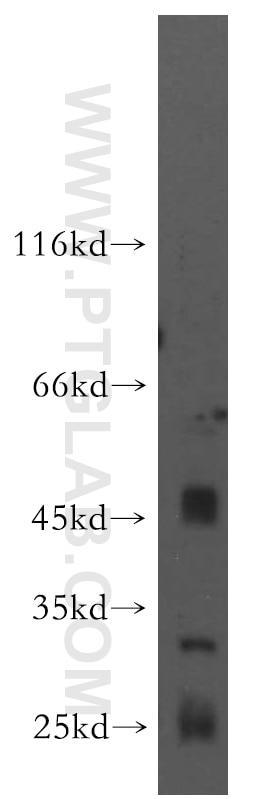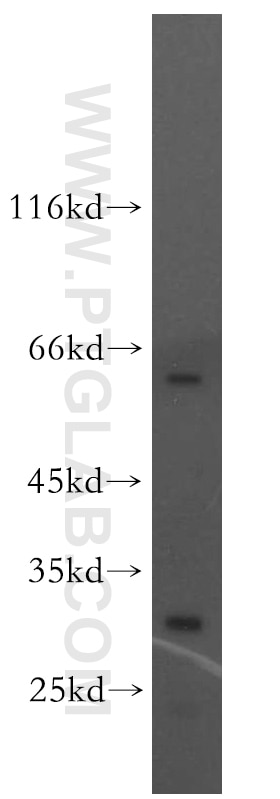GPR162 Polyklonaler Antikörper
GPR162 Polyklonal Antikörper für WB, ELISA
Wirt / Isotyp
Kaninchen / IgG
Getestete Reaktivität
human und mehr (1)
Anwendung
WB, IHC, IF, ELISA
Konjugation
Unkonjugiert
Kat-Nr. : 15254-1-AP
Synonyme
Geprüfte Anwendungen
| Erfolgreiche Detektion in WB | SH-SY5Y-Zellen, HeLa-Zellen, humanes Hirngewebe, Y79-Zellen |
Empfohlene Verdünnung
| Anwendung | Verdünnung |
|---|---|
| Western Blot (WB) | WB : 1:500-1:2000 |
| It is recommended that this reagent should be titrated in each testing system to obtain optimal results. | |
| Sample-dependent, check data in validation data gallery | |
Veröffentlichte Anwendungen
| WB | See 1 publications below |
| IHC | See 2 publications below |
| IF | See 1 publications below |
Produktinformation
15254-1-AP bindet in WB, IHC, IF, ELISA GPR162 und zeigt Reaktivität mit human
| Getestete Reaktivität | human |
| In Publikationen genannte Reaktivität | human, Maus |
| Wirt / Isotyp | Kaninchen / IgG |
| Klonalität | Polyklonal |
| Typ | Antikörper |
| Immunogen | GPR162 fusion protein Ag7011 |
| Vollständiger Name | G protein-coupled receptor 162 |
| Berechnetes Molekulargewicht | 64 kDa |
| Beobachtetes Molekulargewicht | 33 kDa, 64 kDa |
| GenBank-Zugangsnummer | BC002353 |
| Gene symbol | GPR162 |
| Gene ID (NCBI) | 27239 |
| Konjugation | Unkonjugiert |
| Form | Liquid |
| Reinigungsmethode | Antigen-Affinitätsreinigung |
| Lagerungspuffer | PBS with 0.02% sodium azide and 50% glycerol |
| Lagerungsbedingungen | Bei -20°C lagern. Nach dem Versand ein Jahr lang stabil Aliquotieren ist bei -20oC Lagerung nicht notwendig. 20ul Größen enthalten 0,1% BSA. |
Protokolle
| PRODUKTSPEZIFISCHE PROTOKOLLE | |
|---|---|
| WB protocol for GPR162 antibody 15254-1-AP | Protokoll herunterladen |
| STANDARD-PROTOKOLLE | |
|---|---|
| Klicken Sie hier, um unsere Standardprotokolle anzuzeigen |
Publikationen
| Species | Application | Title |
|---|---|---|
Acta Neuropathol Commun Blood-based CNS regionally and neuronally enriched extracellular vesicles carrying pTau217 for Alzheimer's disease diagnosis and differential diagnosis | ||
Bone Marrow adipogenic lineage precursors (MALPs) facilitate bone marrow recovery after chemotherapy | ||
JCI Insight Transient expansion and myofibroblast conversion of adipogenic lineage precursors mediate bone marrow repair after radiation. |
